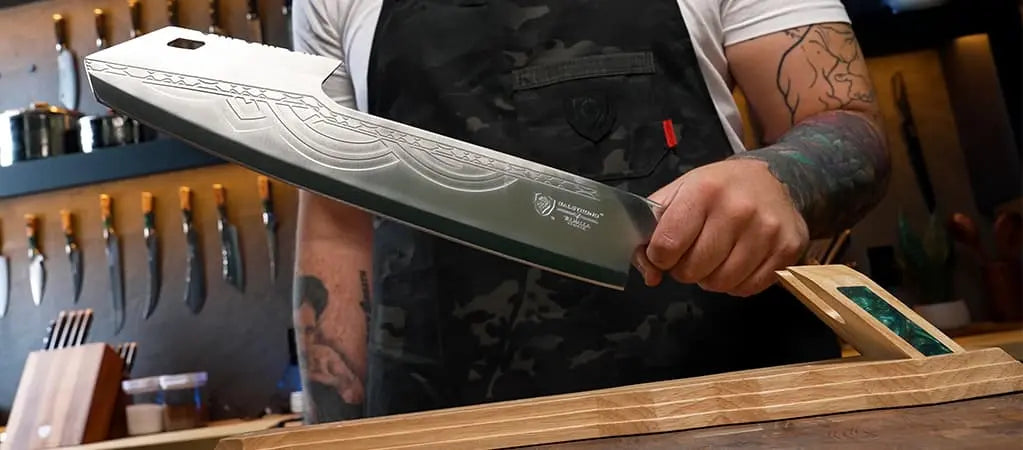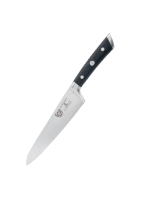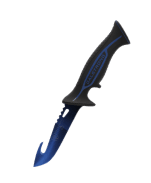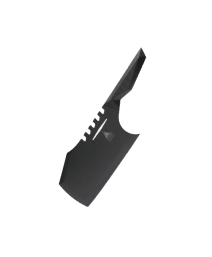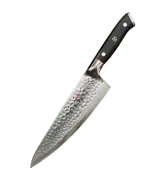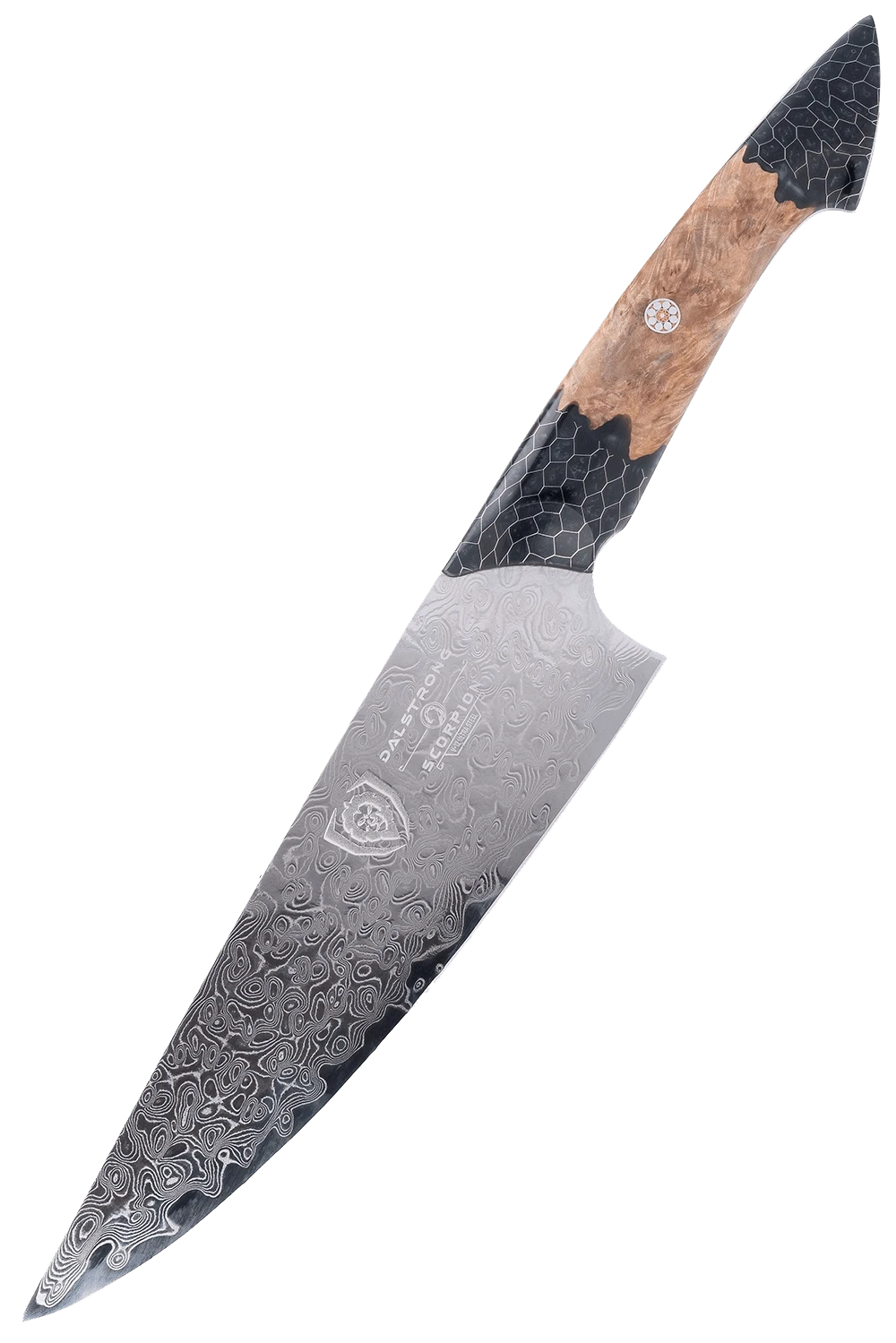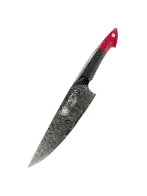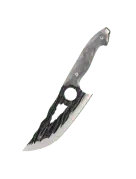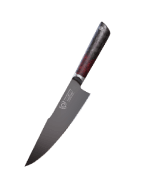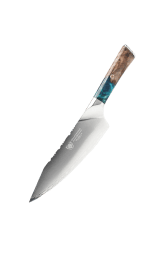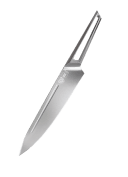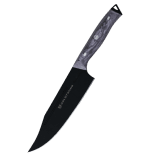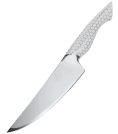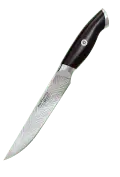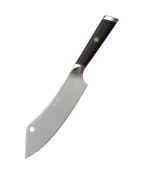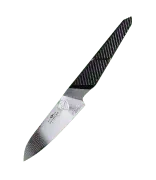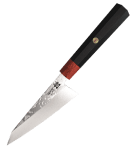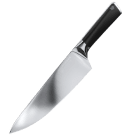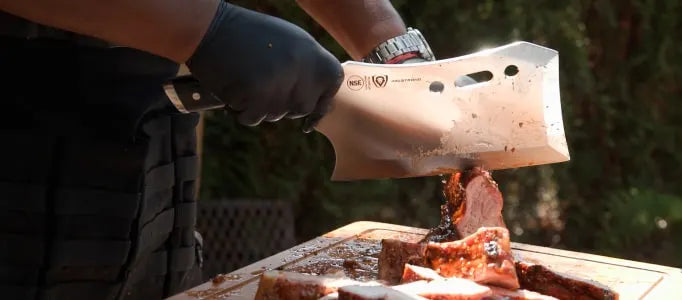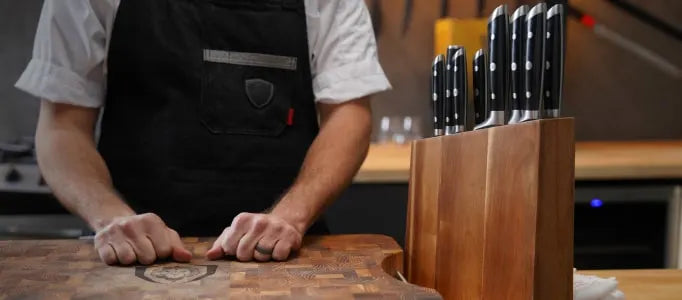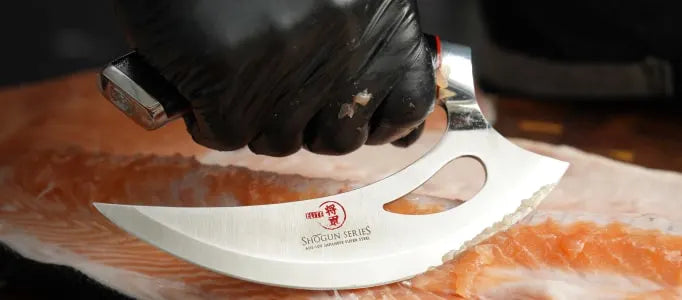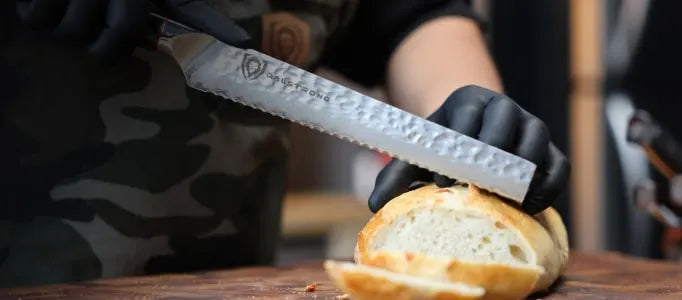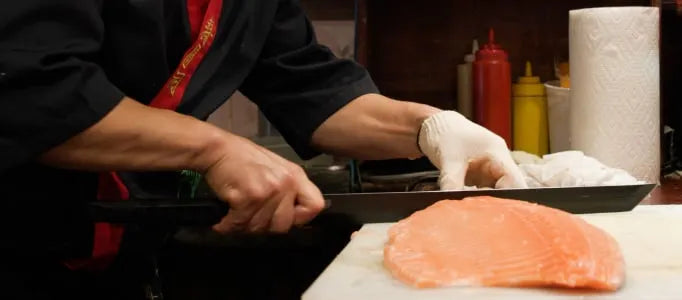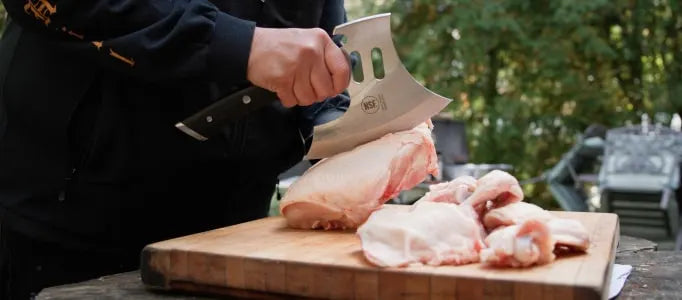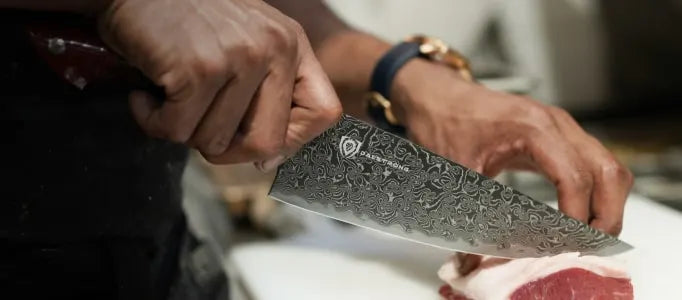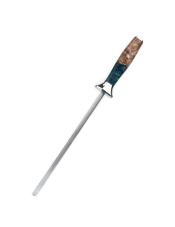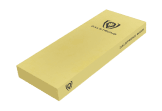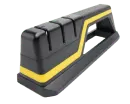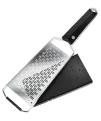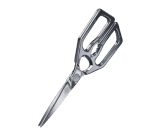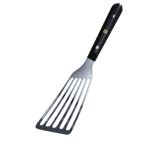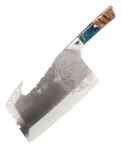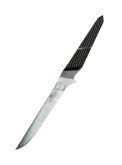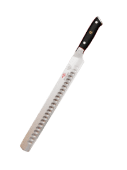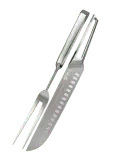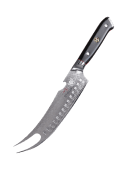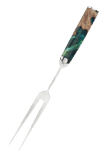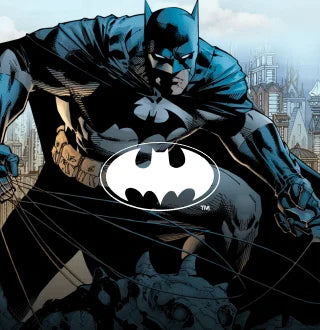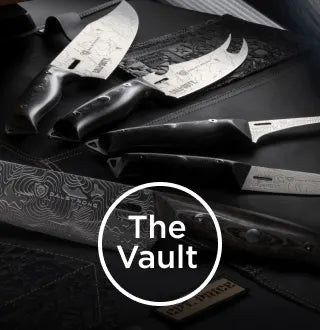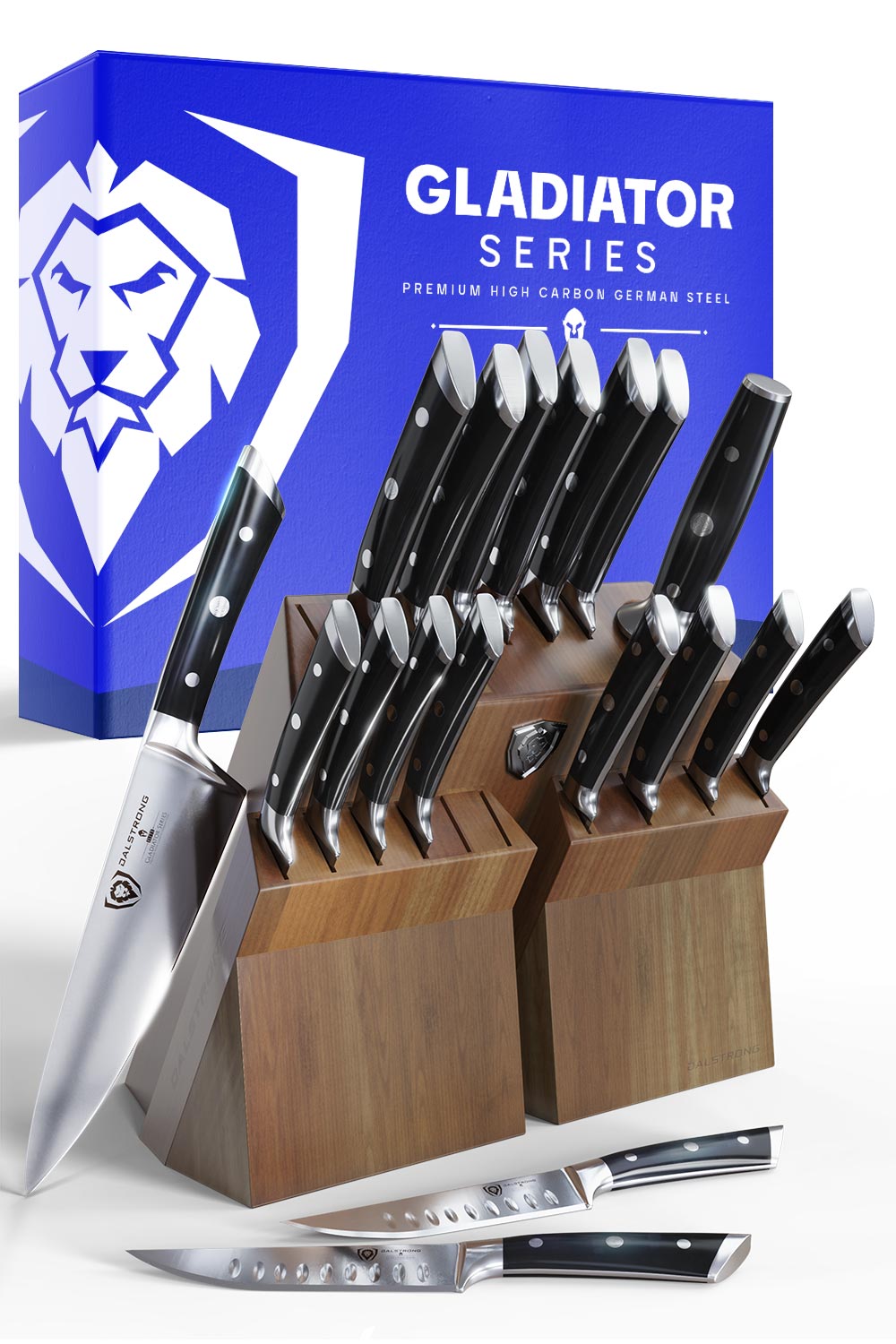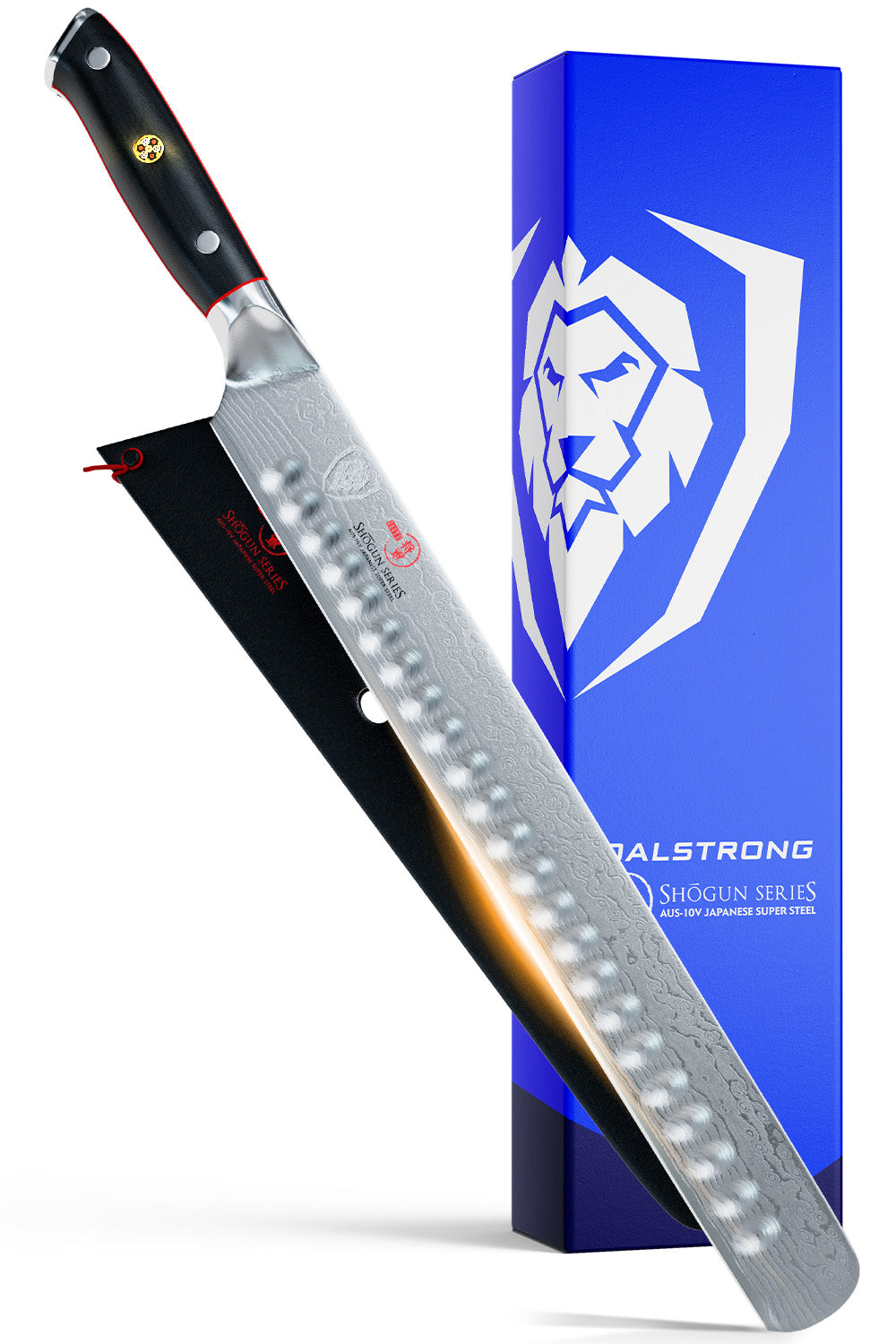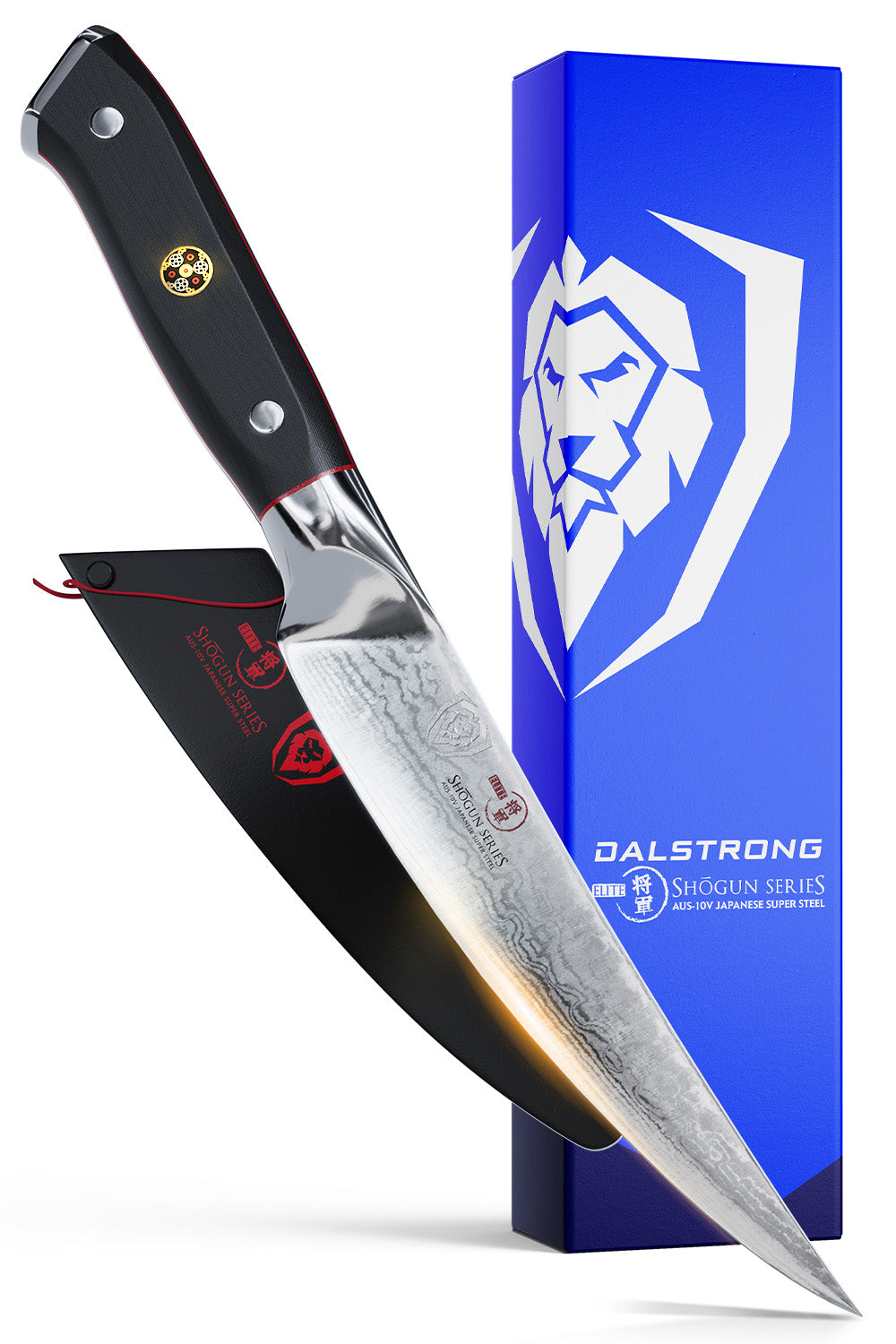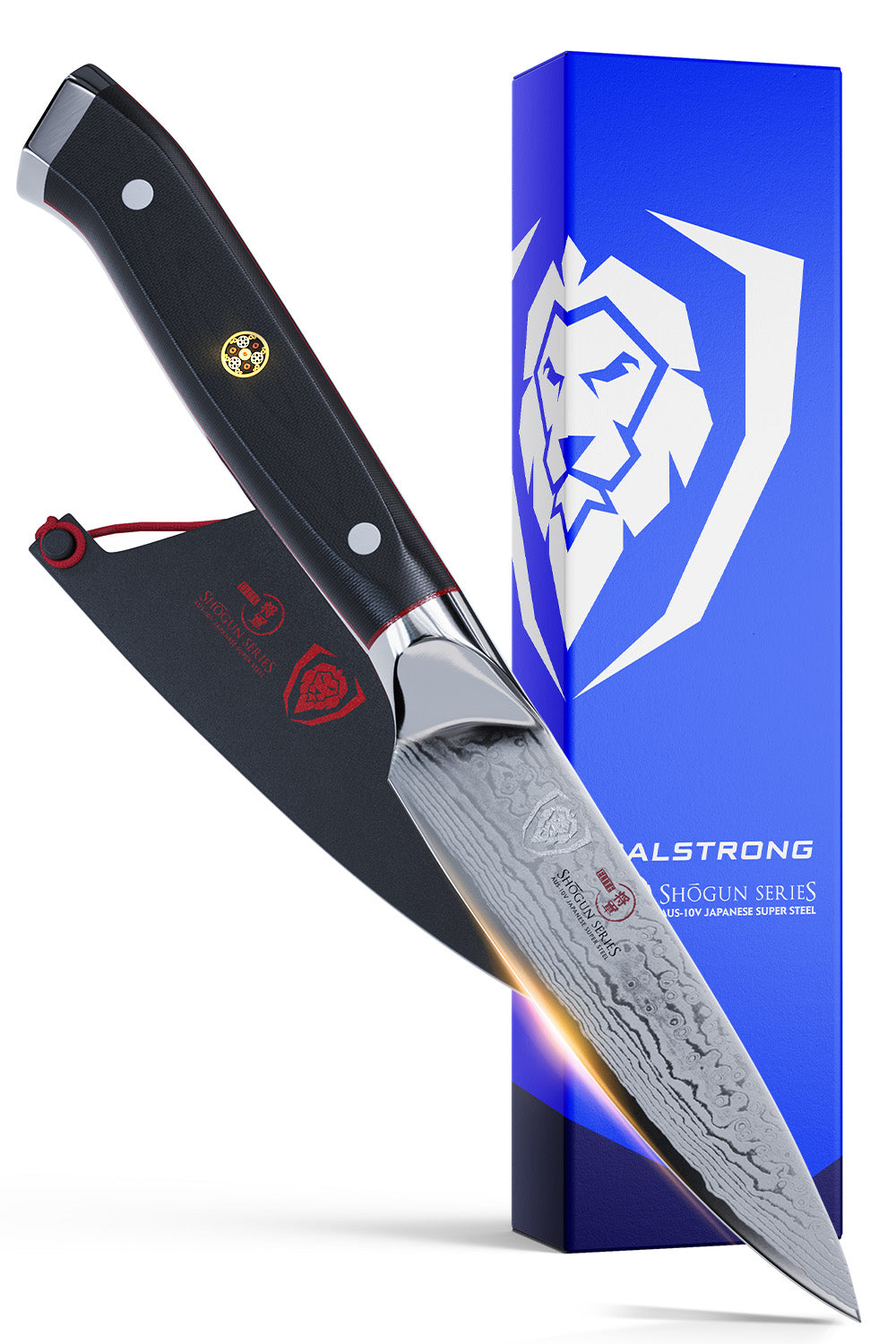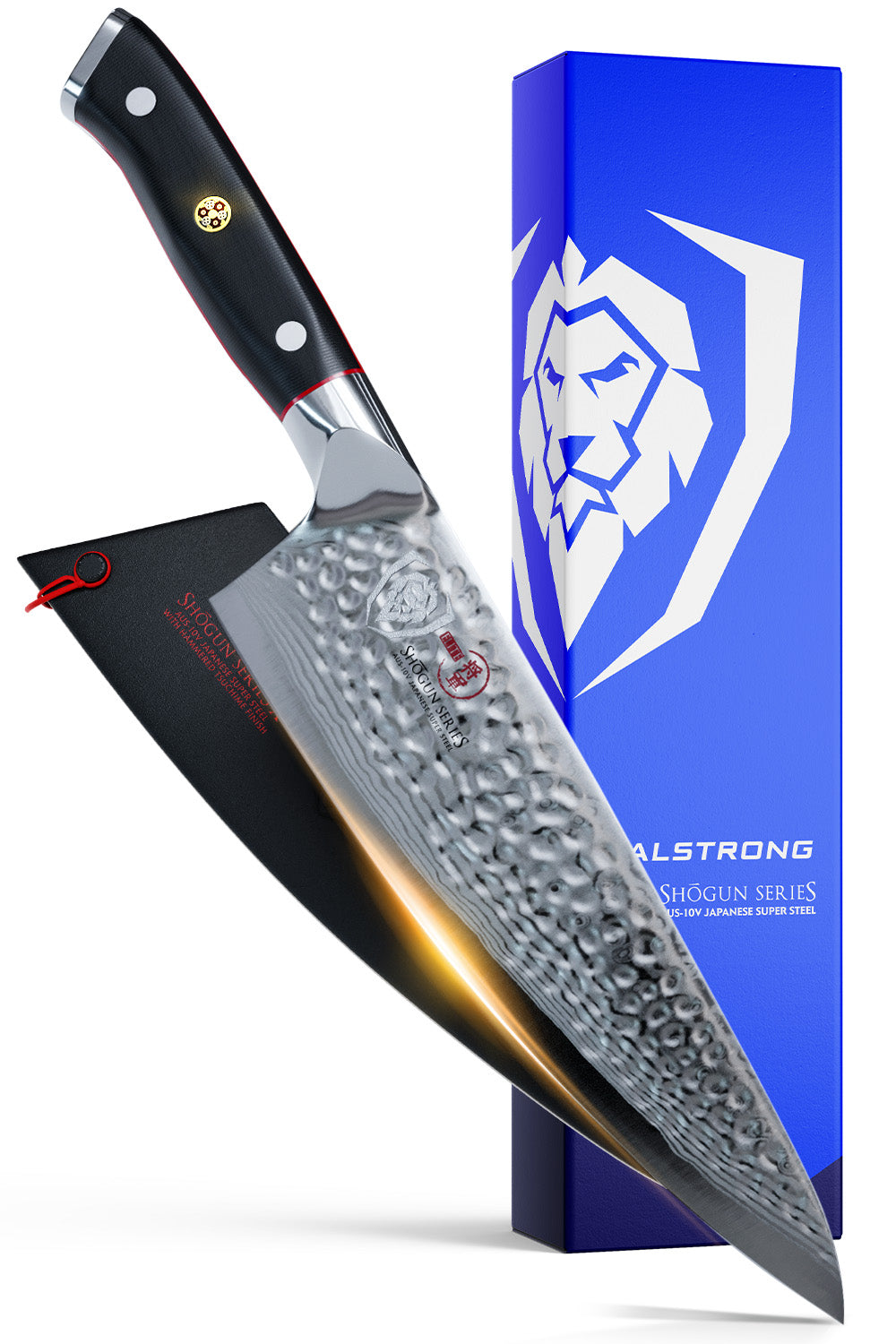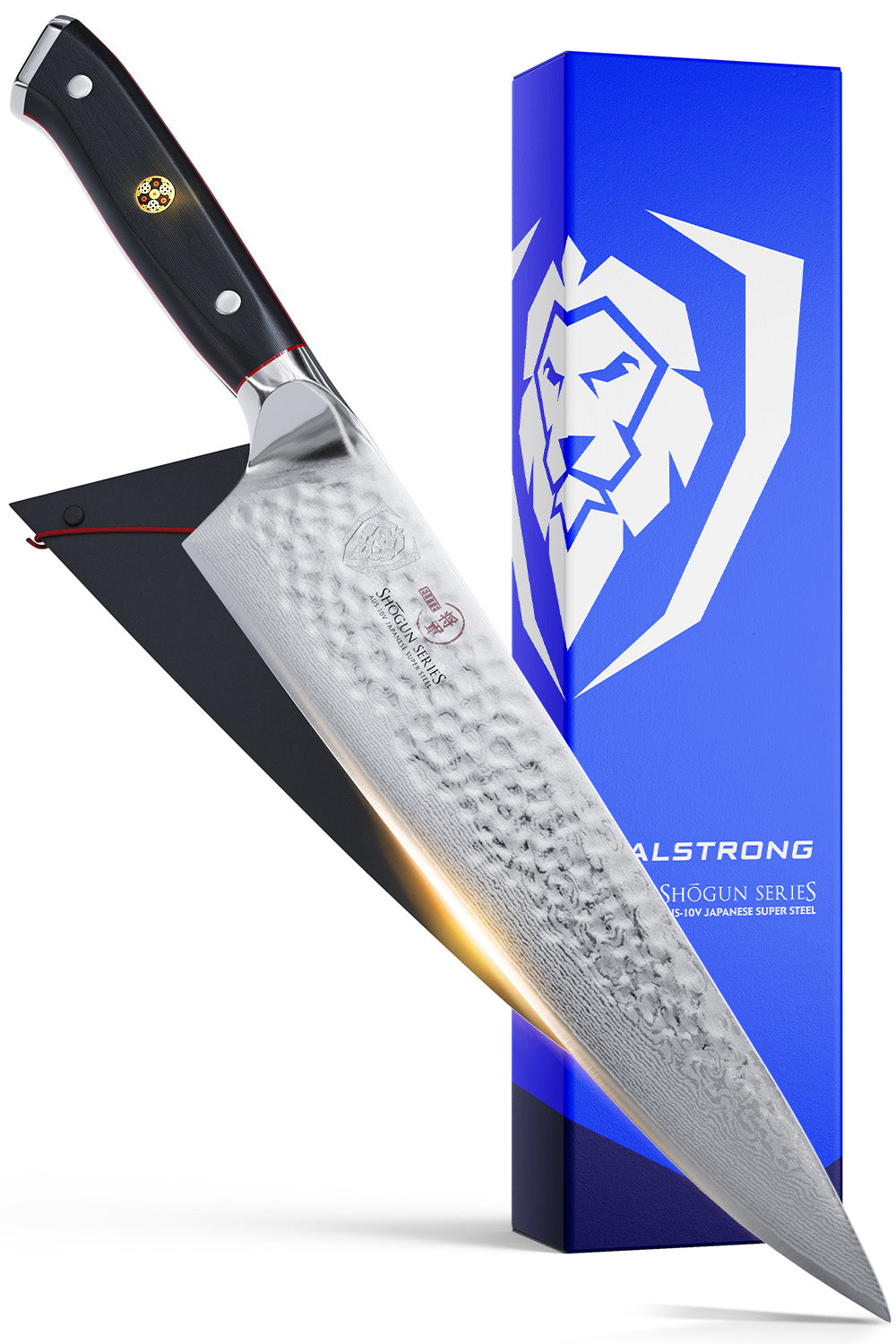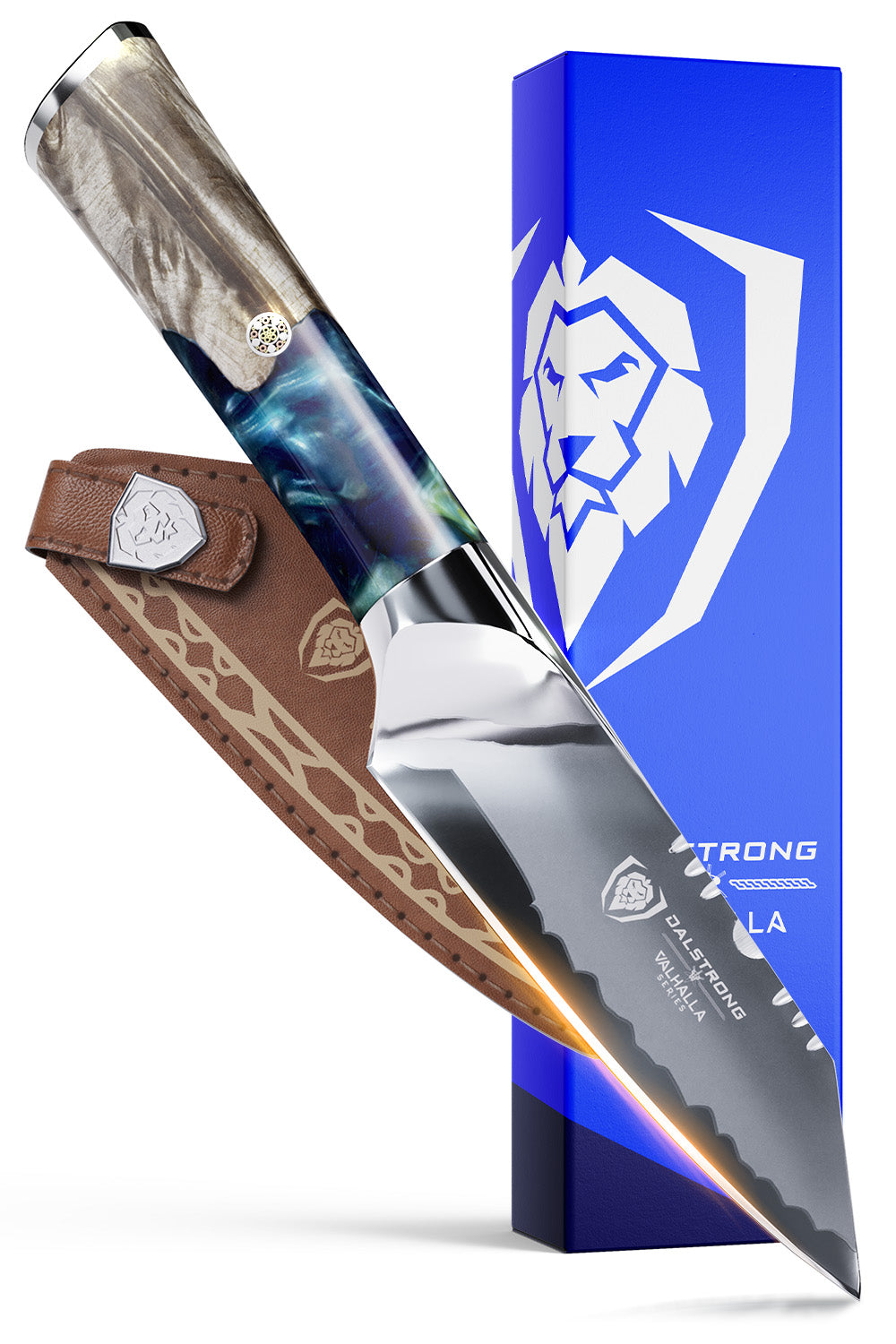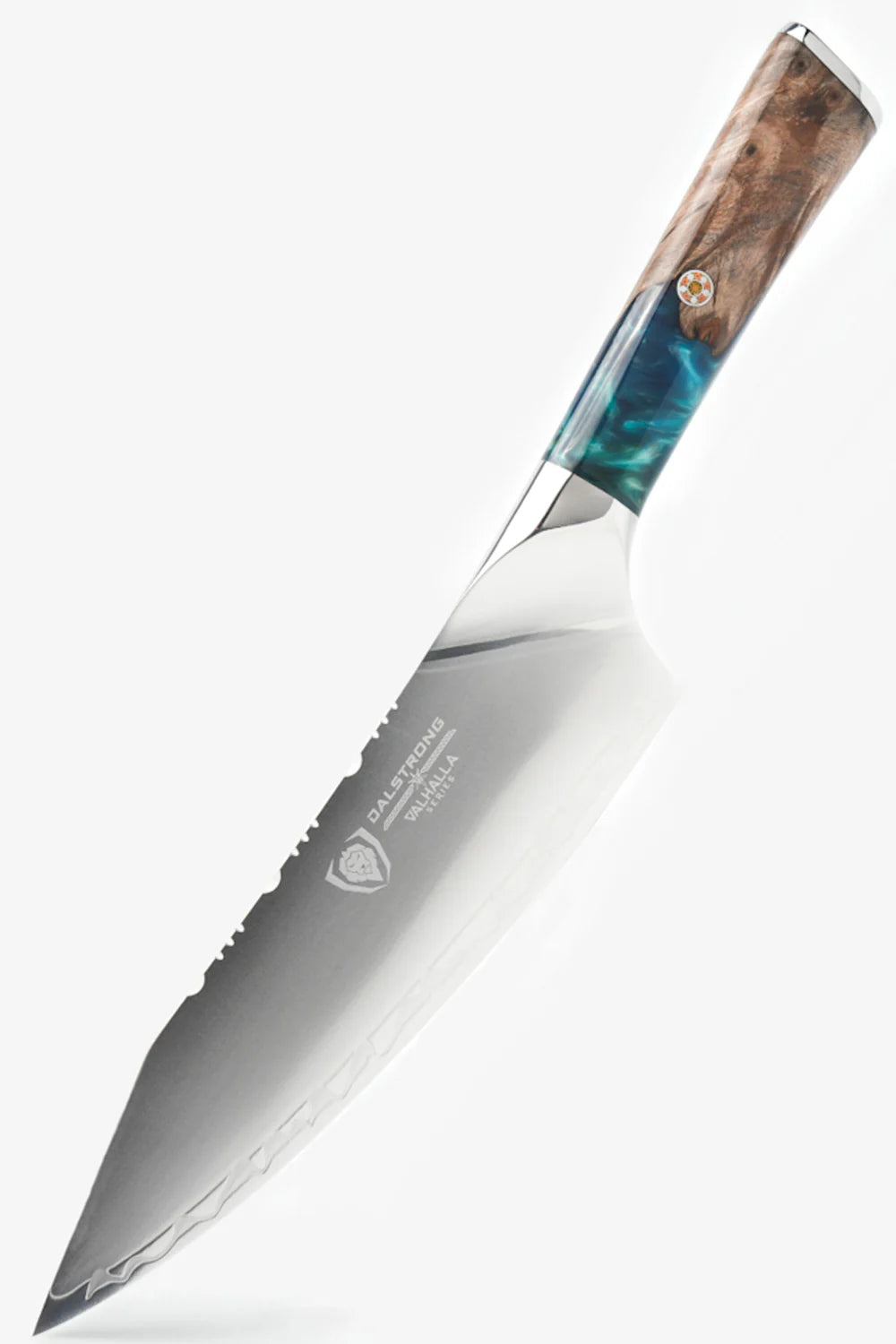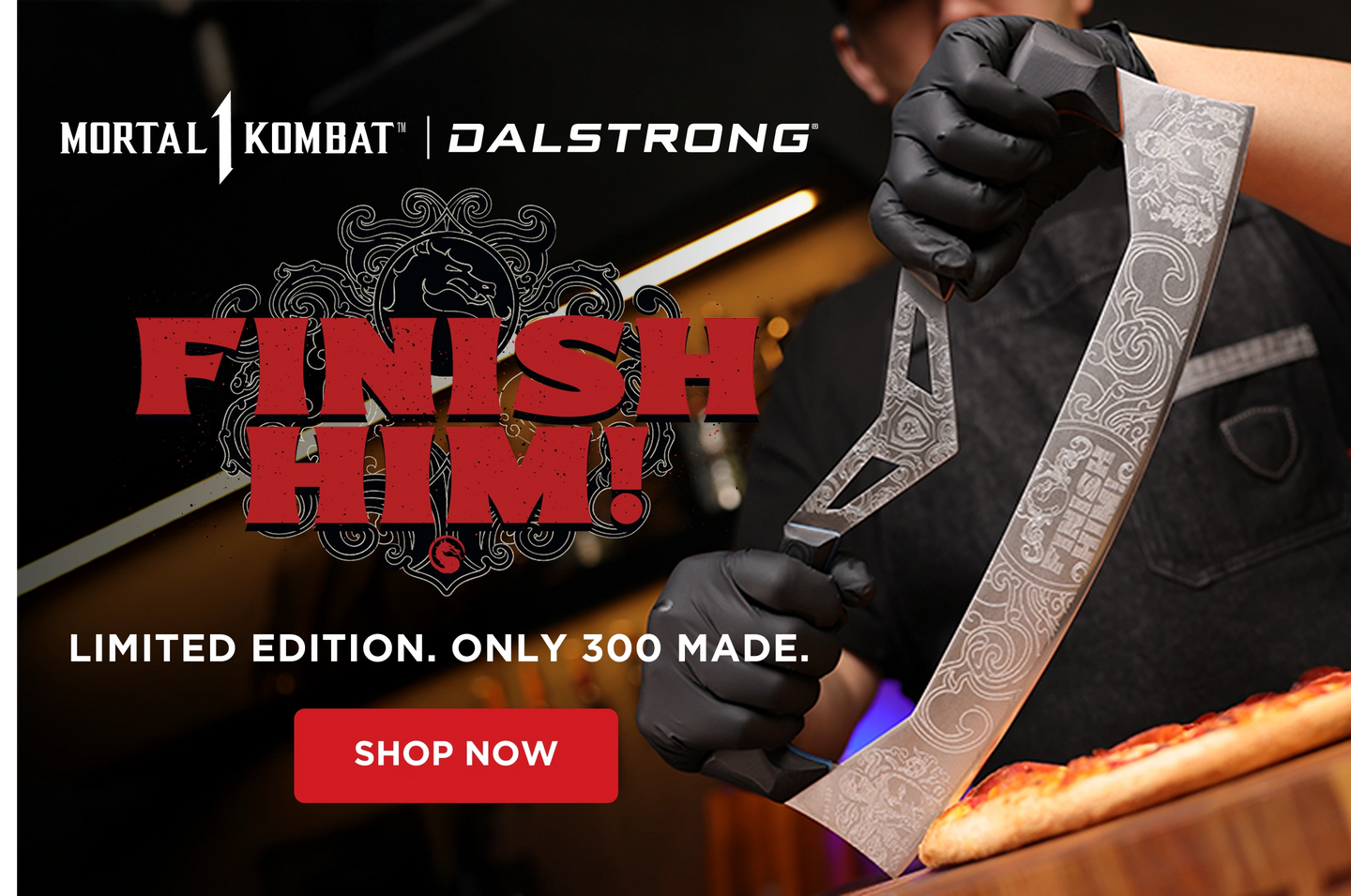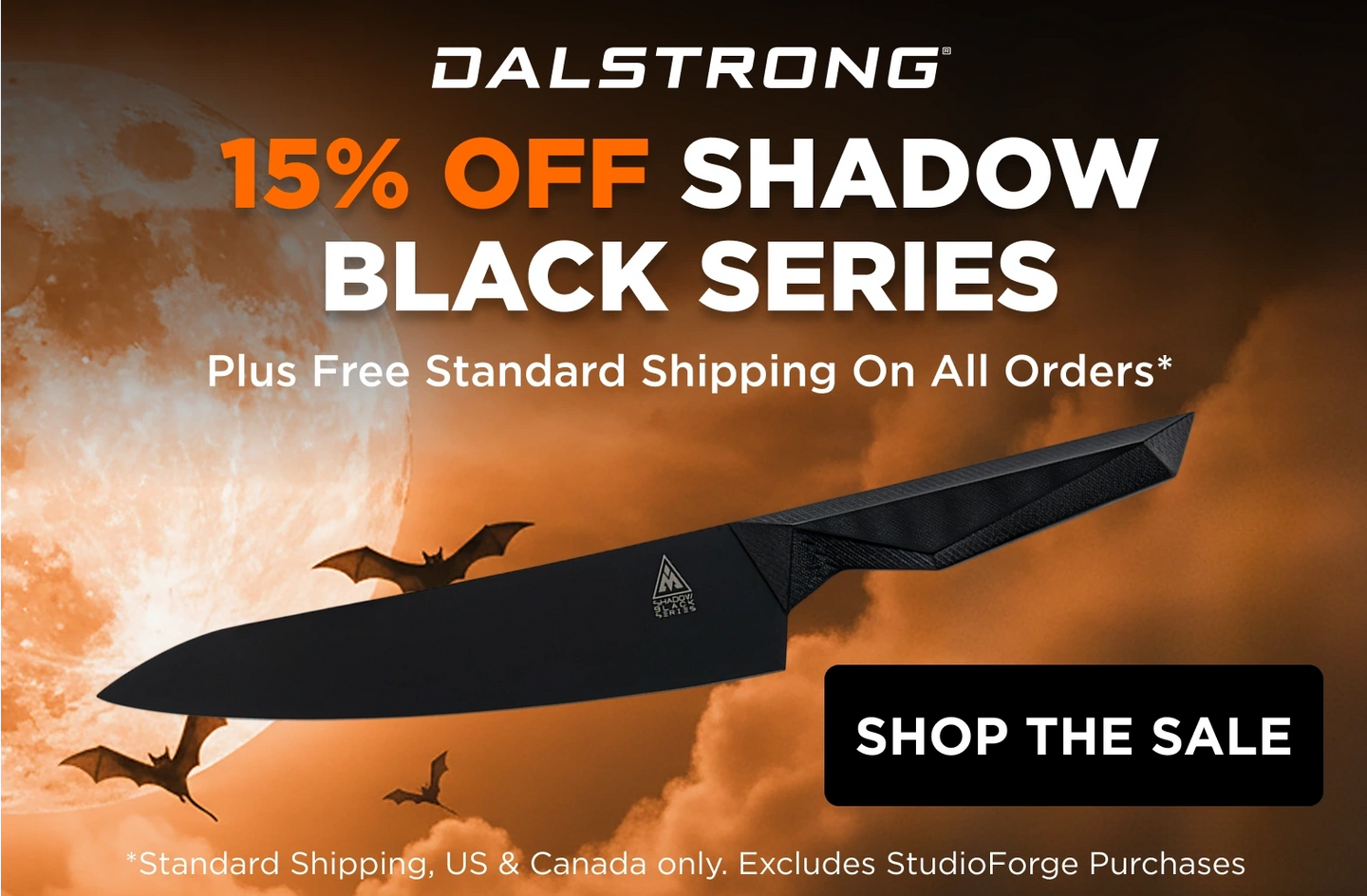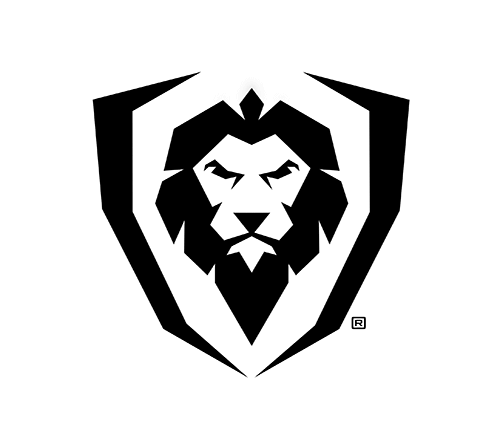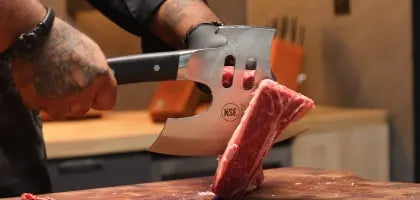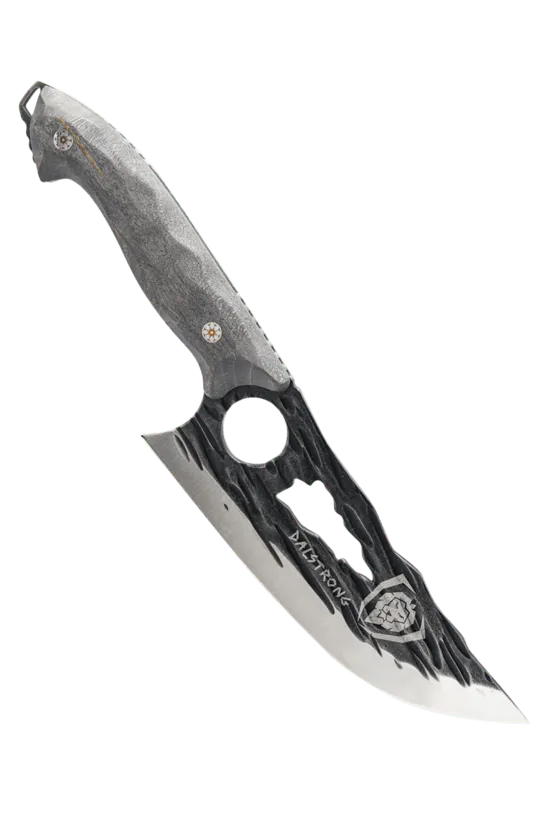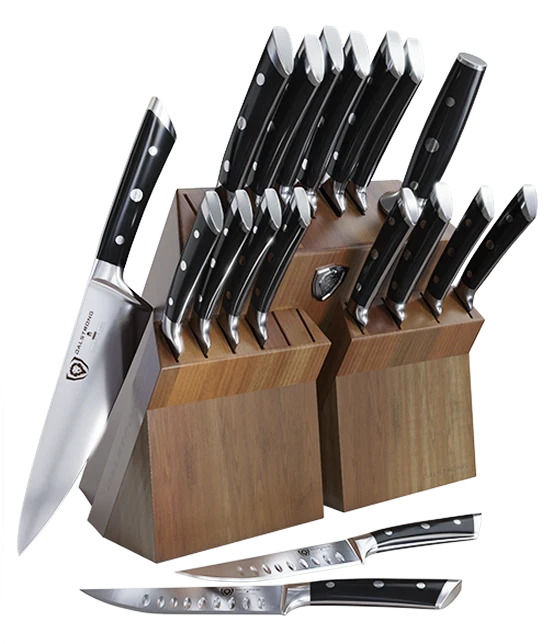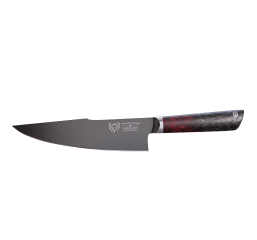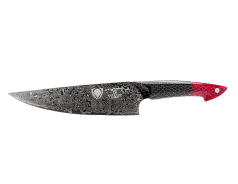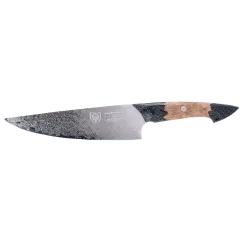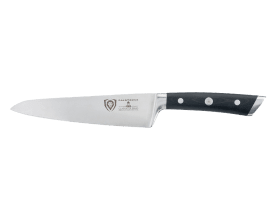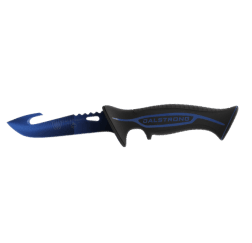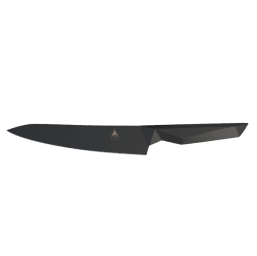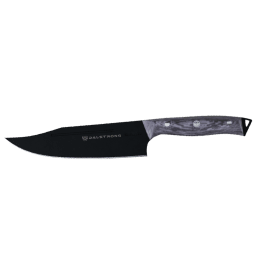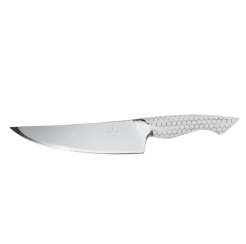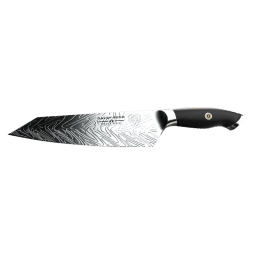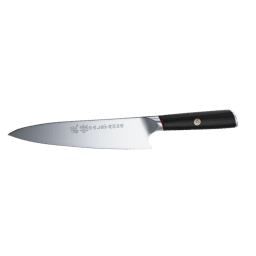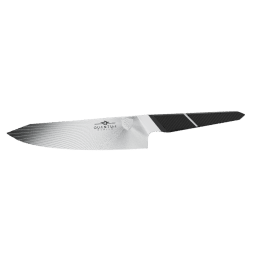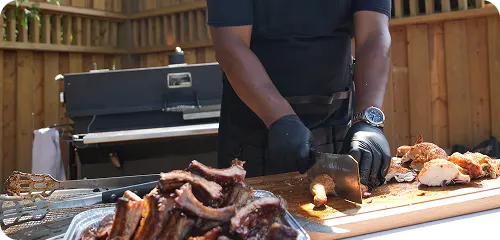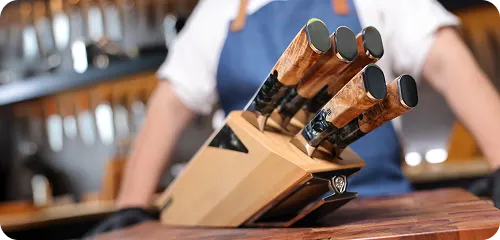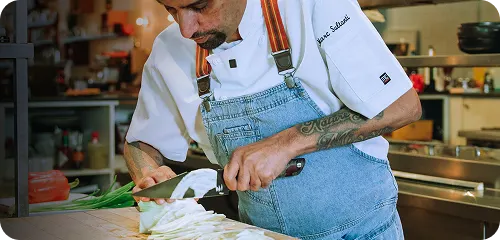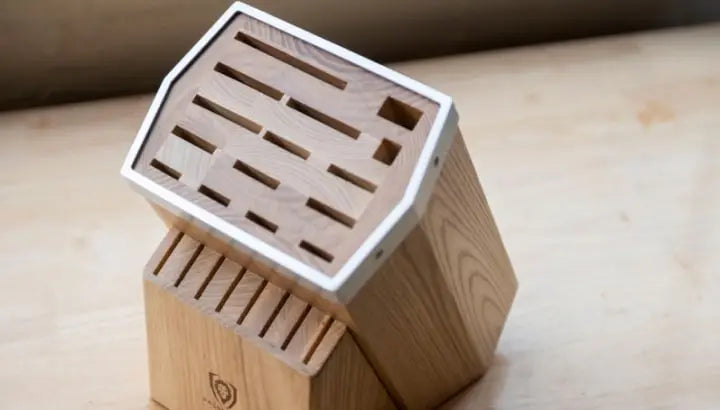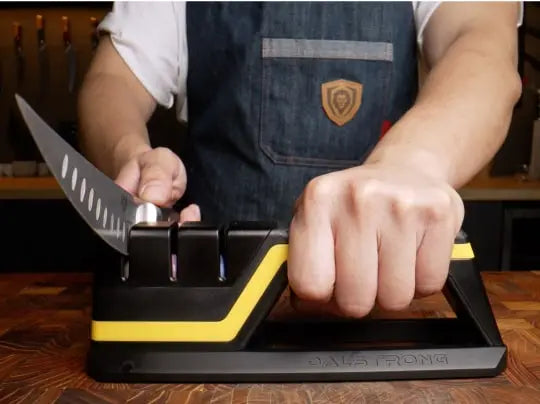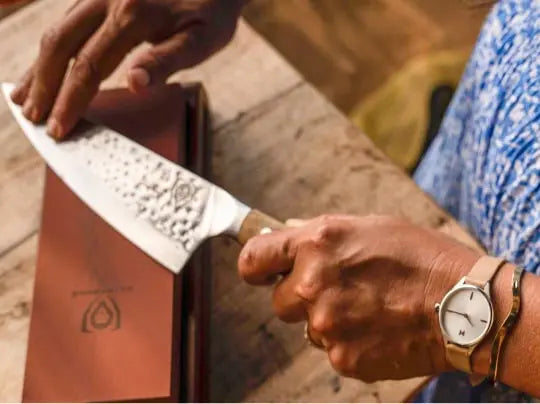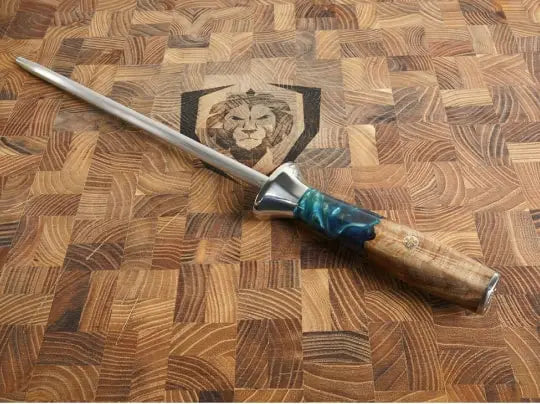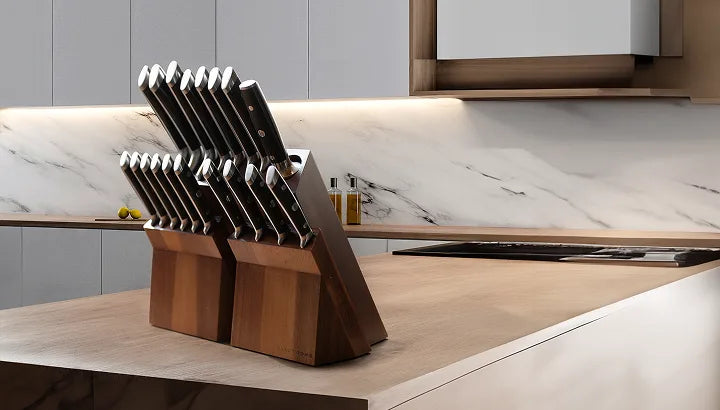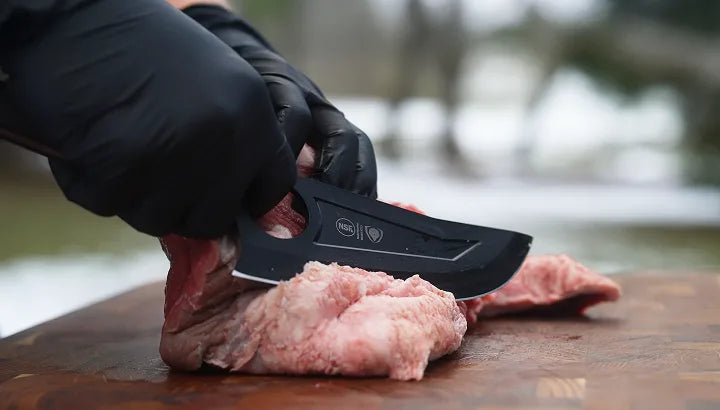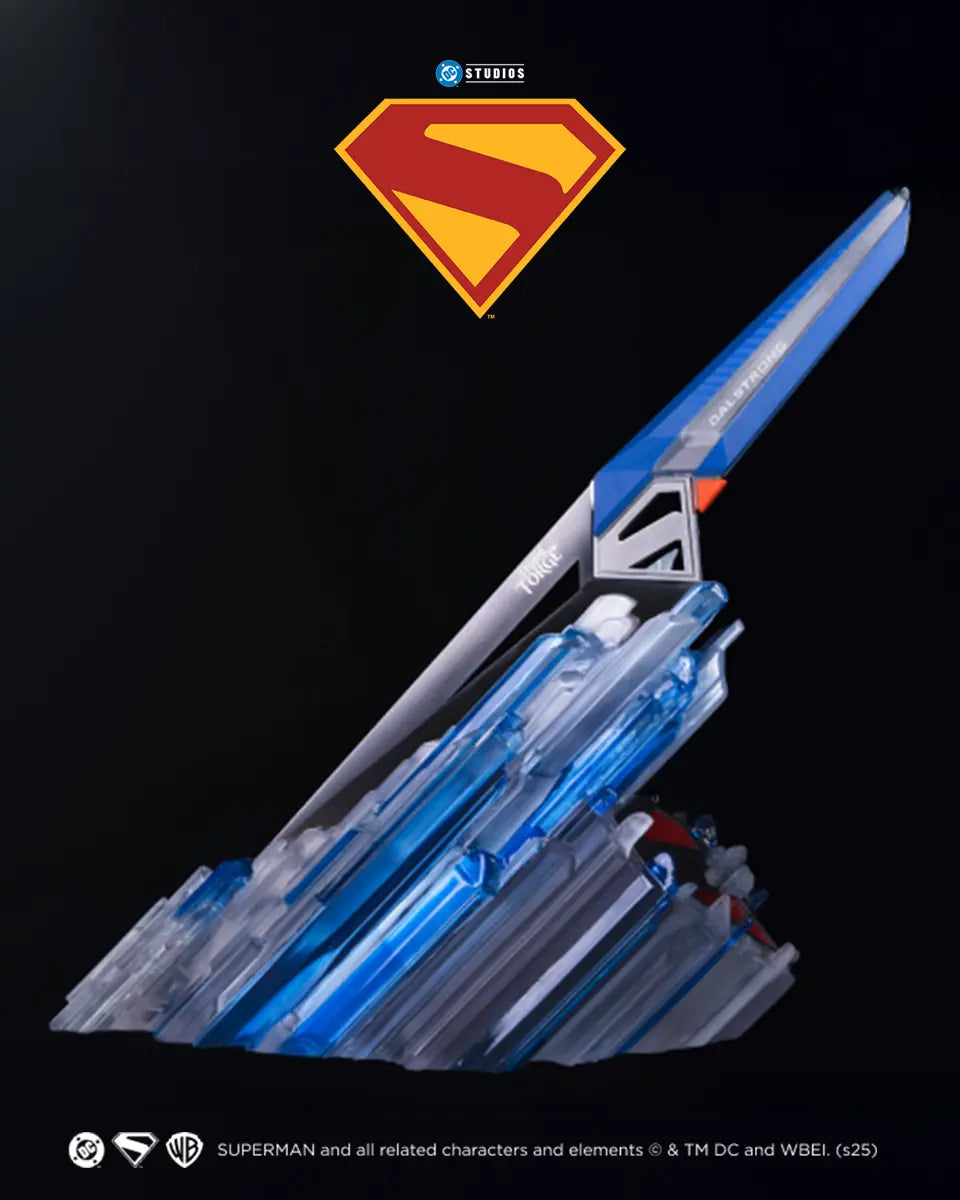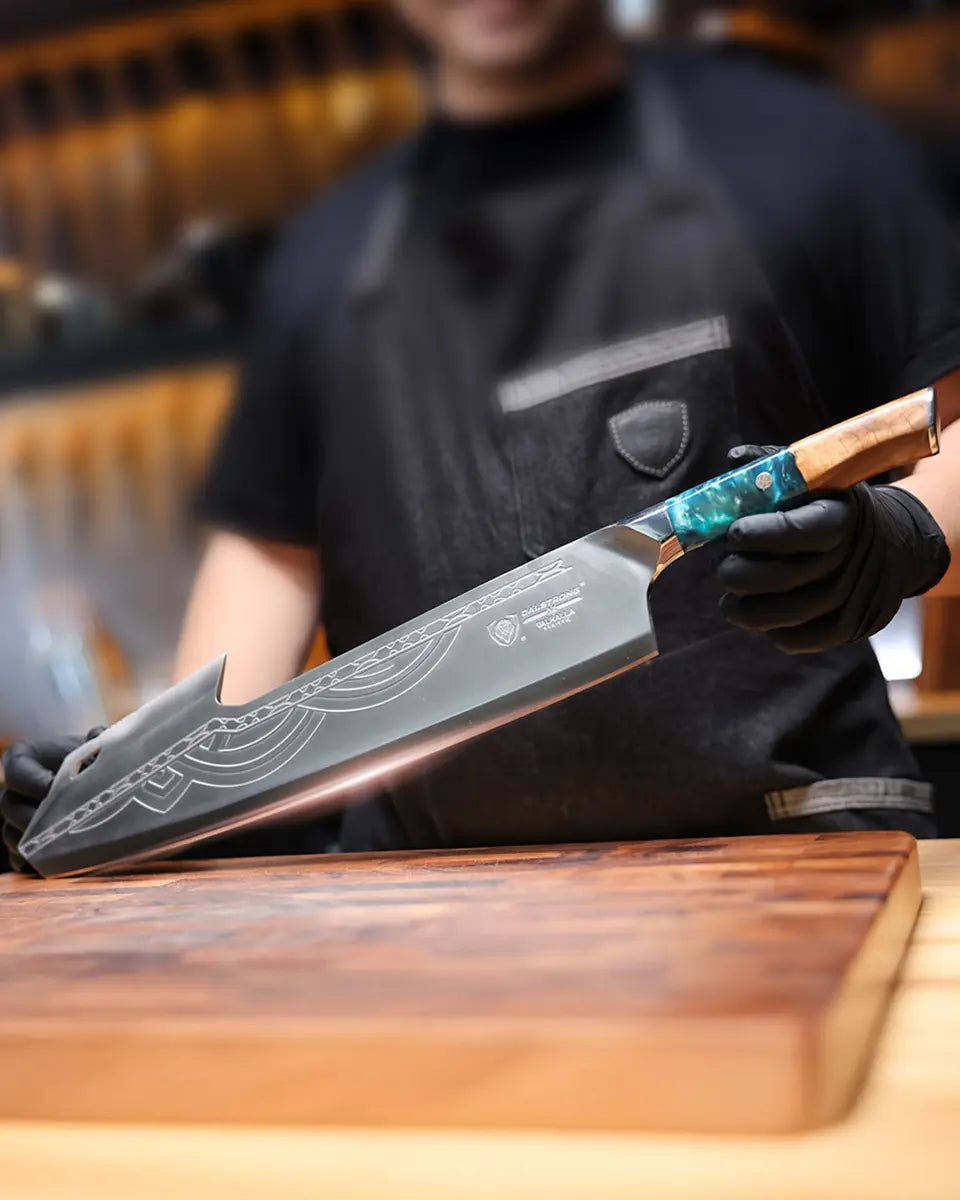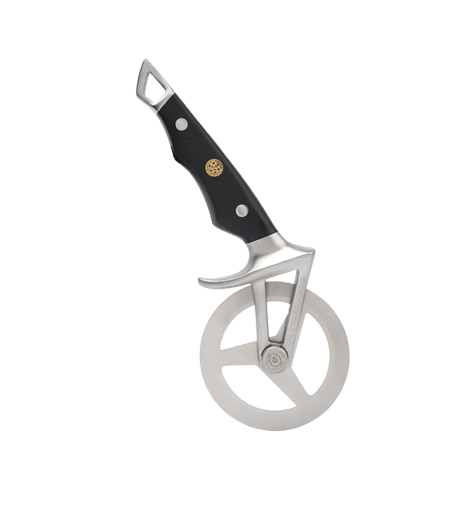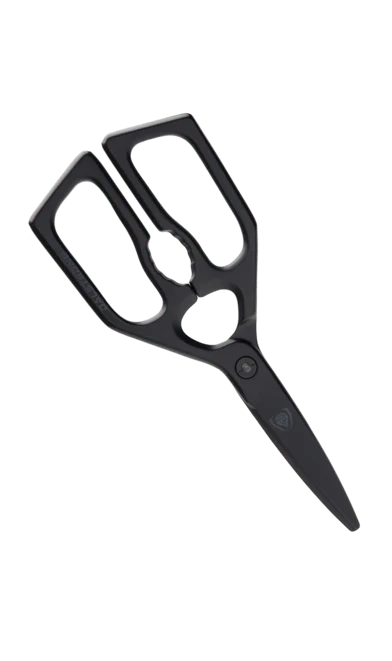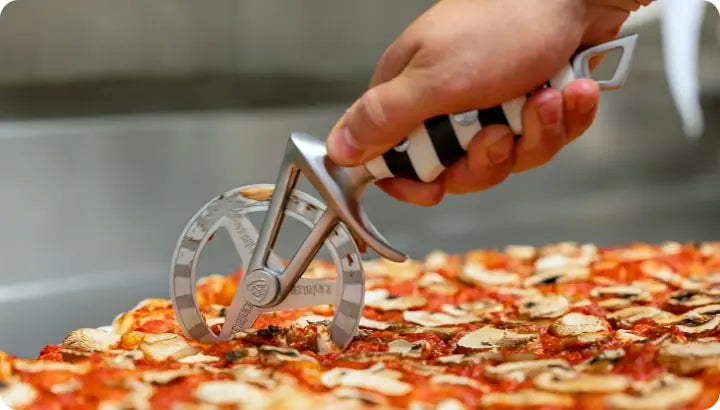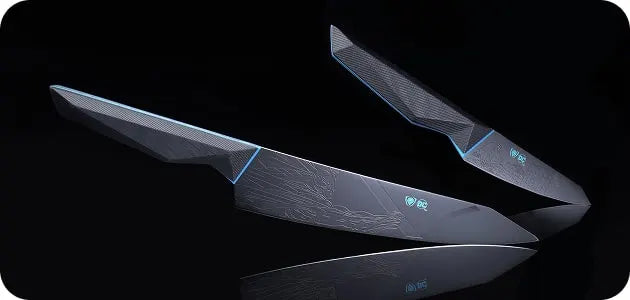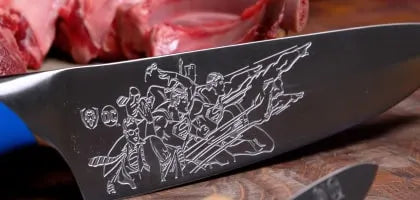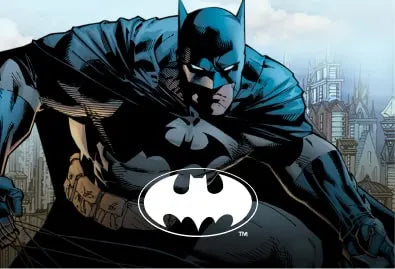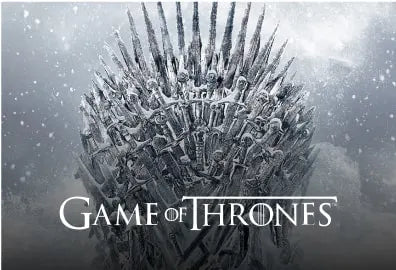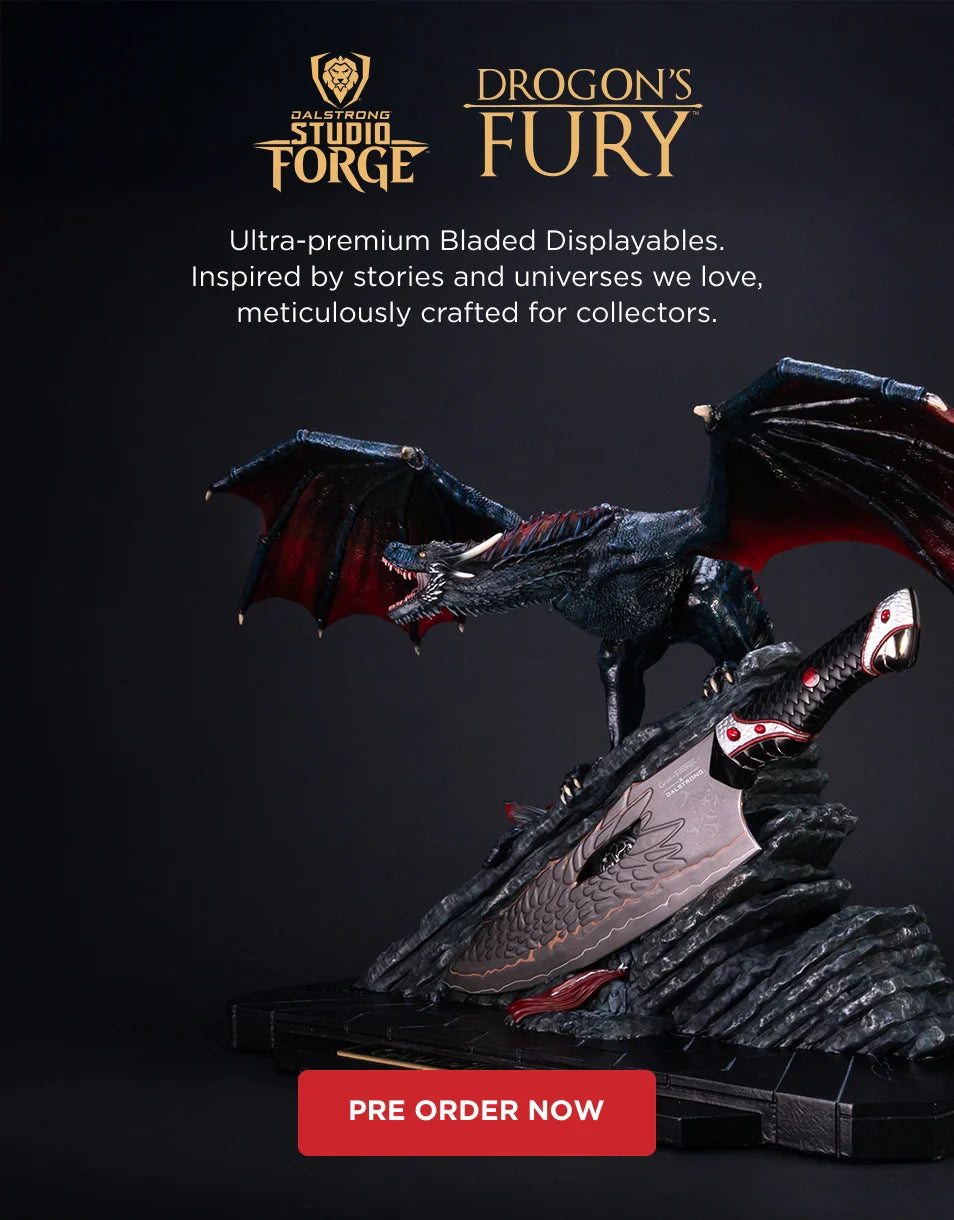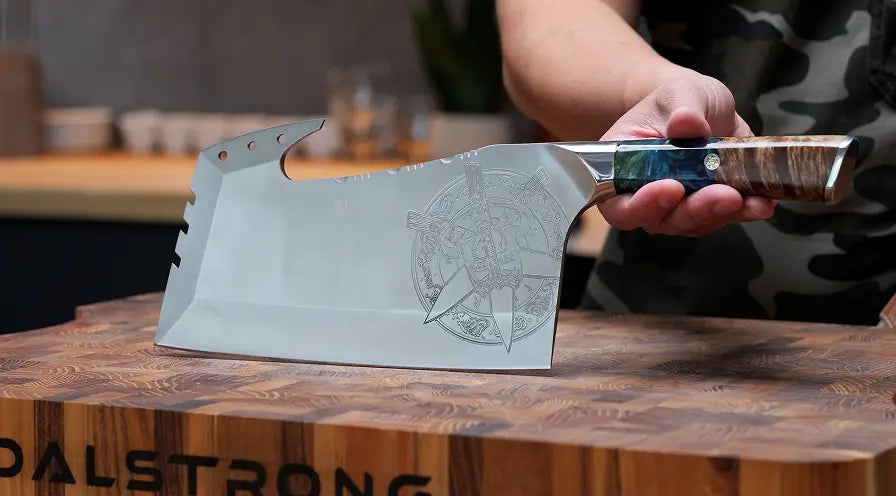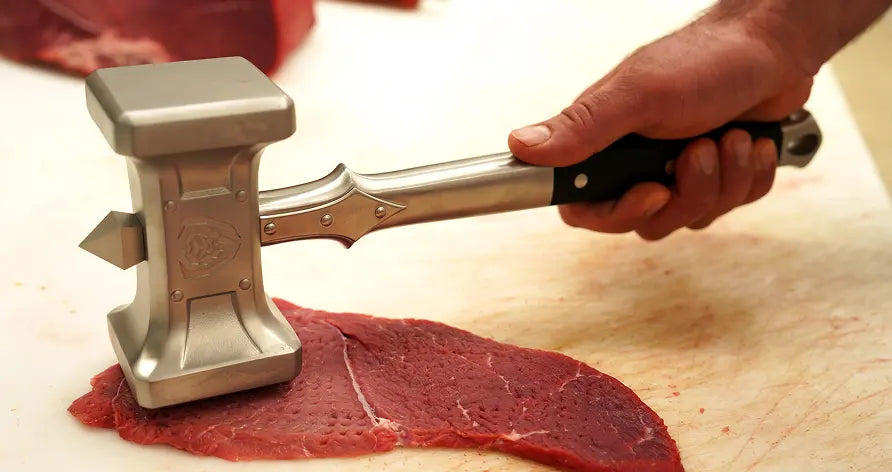Nakiri Vegetable Knife 6" | Shogun Series X
What is a Japanese Chef Knife?
Japanese chef knives are the perfect tool for all your slicing, dicing, chopping, and cutting needs. A major reason why some chefs prefer to keep at least one Japanese knife in their roll is that they are easier to sharpen than western or European knives and provide better edge retention when looked after with care.
9.5'' Yanagiba Knife | Phantom Series | Dalstrong ©
Curious why Japanese knives are regarded as the finest culinary tools? In today’s blog, let’s take a close look at the different Japanese kitchen knives and what makes these beauties a cut above the other knives available in the market.
1. What is a Japanese Chef’s Knife?
Santoku Knife 7" | Delta Wolf Series
When we speak of Japanese knives, it cannot be forgotten that they were greatly influenced by the technological development of Japanese swords. It is no secret that the Japanese are master blade crafters and knife makers.
This is because of this that Japanese kitchen knives or Hōchō have a strong cult following of passionate chefs and cooks across the globe. With its well-renowned reputation for the most well-crafted kitchen implements in the world, Japanese knives offer strength, beauty, and durability.
The primary reason that these knives are so desirable is the fact that they are made with hard carbon steel and still have a light, thin, and super sharp edge. This makes these knives the perfect tool for all your slicing, dicing, chopping, and cutting needs.
Another reason why chefs prefer to keep a Japanese knife around is that they are easier to sharpen than western or European knives and provide better edge retention when looked after with care.
Your kitchen may have a wide array of tools and equipment, from cookware to accessories like a sturdy cutting board and aprons. But, if you are in pursuit of upgrading your kitchen knife collection and equipping your home with the holy grail of knives, a Japanese knife set is well worth your investment.
Every Japanese knife can range in price depending on the type of steel used and the methods adopted to craft and sharpen it, and choosing can get overwhelming, especially if you’re new to building your kitchen knife arsenal.
But don’t sweat it! I’m here to walk you through the characteristics that set these knives apart from normal chef’s knives and get down to the nitty-gritty of finding a Japanese blade that works for your kitchen.
2. Japanese Chef’s Knife VS Ordinary Chef’s Knife
Is it time for you to buy a high-quality knife for your kitchen but you don’t know what to pick?
After some research, I have identified some stark differences that make it easier for you to understand why Japanese knives are so sought after.
|
Key Differences |
||
|
Japanese Chef‘s Knife (Gyuto) |
Ordinary Chef’s Knife |
|
|
Origin |
Originated in Japan |
Originated in Germany and France |
|
Size |
7-8 inches |
6-12 inches |
|
Blade |
It has a wide sheepsfoot blade with no tip (a dull back spine that curves down to meet the straight-edged front blade). |
It has a broad blade that curves upwards to form a tip (spine is thicker to add weight) |
|
Blade Sharpness |
These knives can be sharpened to an approximate angle of 10 – 15 degrees. |
These can be sharpened to 15 to 20 degrees on both sides |
|
Bevel |
It can be single (one-sided) or double (both sides) bevel |
Usually only found in double bevel |
|
Bolster |
Usually no bolster |
Has a bolster |
|
Best Use |
|
|
|
Weight |
Lighter to hold |
Heavier to hold |
3. Things to keep in mind before buying a Japanese Chef Knife
The Ronin Series 10.5" Yanagiba & Sushi Knife - Single Bevel Sushi Blade
Just like your kitchen needs, even Japanese knives are very different from each other. This makes it very important for you to understand what to look for when buying a Japanese knife so you can determine which knife is best suited for your kitchen needs.
Type of steel
- This is probably the most important element to look for. The type of steel can make or break a knife. Japanese knives are known for their fine grain structure and hard carbon steel. What you need to keep in mind is that the greater the hardness, the finer the bevel angle, and the sharper the edge. When it comes to Japanese knives, you have a choice of options to pick from, namely high-carbon steel and stainless steel.
- Stainless steel blades are rust-resistant, easy maintenance and have excellent sharpness and edge retention. However, these blades require professional sharpening.
- On the other hand, high-carbon steel blades combine the advantages of stainless steel and carbon steel to create a superior blade. The premium quality of the steel and sharpness of the blade make this steel highly durable and easier to sharpen.
Type of handle
- Getting a good grip on your knife is very important to make clean, smooth cuts and for that purpose, you need a handle that works for you. A knife handle should not be heavier or lighter than required and its shape should sit well in your hands. By chance, if you have a knife that feels uncomfortable, it is bound to perform poorly, regardless of the blade quality. Japanese knives come with 2 types of handles, mainly the traditional Japanese style handle or a western-style handle.
- Western-style knife handles are heavier and sturdier, which is why it is preferred for tougher tasks. On the other hand, Japanese-styled handles are usually made of wood, making them lighter and more nimble to work with.
Usage
- Determining the intended purpose of use is of utmost importance. That is because different blades have different strengths. So before you make the purchase, ask yourself “For what purpose do I intend to use the knife?” For example, if you’re looking for a knife that will come in handy when you are chopping and slicing vegetables, you would want to go for a knife with a curved edge that will allow cutting with a rocking motion.
- Similarly, if you need a knife to cut raw fish or meat, you would want to go for a knife with a straight-edged blade as it allows for push-and-pull strokes.
- The length of the blade matters too. For instance, a shorter blade works wonderfully when cutting small vegetables, however, you will need a longer blade to slice open a whole fish.
Single bevel or Double-bevel
- First, let’s understand what ‘bevel’ means. A knife bevel is a surface that has been ground to form the knife’s edge. A close inspection of a knife will reveal a slight angle on either 1 or both sides that runs down to the edge. That is the bevel.
- If there is one on both sides, it is a double-bevel knife and if there is one on only one side, then it is a single bevel knife.
- Generally, western knives are double-beveled while Japanese ones are traditionally single-beveled. However, you can get a premium-quality Japanese knife in either style.
- While professional chefs prefer single-beveled knives for their higher precision cutting, it is not easy to handle and is harder to sharpen. If you are buying a knife for your home kitchen, a double bevel is more favorable.
4. Introduction to Damascus Steel
6'' Nakiri Knife | Shogun Series X | Dalstrong ©
Japanese kitchen knives have a rich history stemming from centuries of crafting Samurai swords. Japanese steel is forged painstakingly by hand and folded many times to create a blade that is both strong and durable, something every kitchen needs. Some Japanese knives are known for their beautiful styles along with diverse functions.
The distinct beauty and strength of these blades put Japanese knives in a different league altogether. Damascus steel knives are crafted with Damascus steel along with wavy patterns. This steel, in general, comprises high carbon steels with tempering and hardening properties fused into one.
When the mixture is heated, it produces a visible crystalline structure. The crystals form a water-like or wavy pattern when cooled down. The use of Damascus steel produces knives that a strong and long-lasting and works beautifully when you have to perform kitchen tasks like slicing through vegetable or meats. This steel produces a razor-sharp blade, which is why lots of care must be exercised when using this blade, especially for amateur cooks and chefs.
5. Different types of Japanese Knives
7'' Santoku Knife | Quantum 1 Series | Dalstrong ©
When it comes to the art of making knives, Japanese knifemakers tend to focus their attention on specialization and task-specific designs. These knives are the cream of the crop in the culinary world and have a wide range of blades under them.
Here is a list of some of the most important Japanese kitchen knife styles you need to know:
Santoku Knife
The most common style of Japanese knives, a Santoku knife is a multipurpose chef’s knife. What sets this knife apart from your ordinary chef’s knife is the blade which is shorter in length, about 5-7 inches long, and features a straighter edge and a “sheep’s foot” shaped tip. Typically, these knives come with a double bevel blade, making them easier to handle.
This knife gets its name from the term “Santoku” which essentially translates to “three virtues”. In the case of a Santoku knife, it can be used to cut meat, fish, and vegetables or perform 3 important kitchen tasks, namely, chopping, slicing, and dicing.
Nakiri Knife
No matter what vegetable you need to cut, a Nakiri knife will do the job with great precision.
The large, rectangular blade of these knives resemble a western cleaver but are not quite the same. Nakiri knives are too thin to cut through animal bone and are typically used for chopping, slicing, and dicing delicate vegetables and other greens. This is because the knife can produce ultra-fine cuts through a guillotine cutting motion, also called the “push-pull” cut, rather than a rocking motion.
Forged in high carbon stainless steel, the blade length is similar to that of a Santoku knife, but with a totally straight edge for chopping veggies. The hard steel of this classic knife also lends excellent blade retention, meaning you spend less time sharpening the blade and more time putting it to use.
When picking a Nakiri knife for your kitchen, make sure you choose one with an ergonomic handle for extra comfort while cutting and mincing. So if you’re someone in love with your greens or are a vegetarian who spends a lot of time in the kitchen, a classic Nakiri knife is a must-have.
Usuba Knife
Look-wise, Usuba knives may be very similar to a Nakiri knife but are recommended for expert knife users. An Usuba knife is a single-bevel knife with a thicker spine and tall, thin blade made for slicing vegetables precisely and thinly. This knife works so delicately on veggies and fruits that it minimizes damage to the skin, making it the perfect tool if you’re planning on serving raw.
The single bevel Usuba knife comes in either left-handed or right-handed options and is recommended only for professional/experienced users. Inexperienced knife users are more likely to injure themselves without proper training.
Yanagiba Knife
Also called the Yanagi knife, Yanagiba knives are traditionally used for slicing sushi or sashimi.
This knife features a long, narrow blade that ensures paper-thin slices of fish and other meats. The ultra-sharp blade sails through fibers in the flesh preserving its integrity and texture. The blade of this knife is also thicker than standard kitchen knives to provide heft, rigidity and push the sliced piece away from the fish or the meat. The single-beveled blade with a hollowed back offers support when cutting and allows for easy passage through fish.
These blades were most popular among Asian chefs but have now made their way through western kitchens and it used extensively for boneless proteins such as poultry slicing, flank, hanger steak, pork tenderloins, and other moist and tender meats. Although this master-slicer is most well-known as a sushi or sashimi knife, it is a great tool to have in a kitchen even for an amateur sushi enthusiast.
Kiritsuke Knife
A true symbol of status, experience, and expertise, a Kiritsuke knife is mainly used by head chefs or cooks with extensive kitchen experience. This versatile, multi-use chef knife has the ability to function as both, an Usuba knife and a Yanagiba knife, however, it can get difficult to perform both the functions unless the chef has considerable experience.
This sword-shaped knife features a straighter edge than a Yanagiba knife for chopping, dicing, and slicing vegetables, and a longer blade than an Usuba knife for slicing fish with great ease.
Typically a single bevel knife, you can also find a double-bevel knife to make it easier to work with and maintain.
Deba Knife
Are you someone who cooks a whole lot of fish and poultry? Then, a Deba knife is the perfect addition to your kitchen arsenal. Deba knives are sturdy with a somewhat petite blase and are used primarily when working with fish. Finish mongers use Deba knives to scale, behead, and filet fish without damaging the flesh.
The blade of this knife ranges anywhere between 5-13 inches and is strong enough to cut through small and medium-sized bones with ease and precision. However, it is not recommended when working with large bones as it can chip or crack the blade.
Honesuki Knife
Honesuki knives are also known as Japanese boning knives and are primarily used to butcher poultry and fish. The stiff blade and pointed tip are designed specifically for the purpose of deboning and breaking apart meats and fish with precision.
These knives are best used for cutting through connective tissues like the tendons and cartilages rather than through large bones. Its thick heel is also great for scraping meat from bones while its thin and sharp tip can make delicate cuts with maximum efficiency.
Bonus Japanese Knives:
Other than the 7 knife styles listed above, here are some other options that would fit perfectly in your kitchen’s knife collection:
Gyuto Chef Knife
Did you know that the word ‘Gyuto’ translates to ‘cow sword’? Created with the original purpose of cutting and breaking down beef, today a Gyuto knife is used as a true jack of all trades. This highly versatile, double-beveled, sharp-tipped knife can cut through anything from fresh produce to carving a roasted bird.
The thin octagonal-shaped rosewood handle will give you ultimate control while working and will prevent wrist fatigue. The hammered texture of this knife also plays a very important role in reducing friction and preventing the food from sticking to the blade.
Petty Knife
If you are looking for a knife that would work perfectly for small kitchen tasks like peeling fruits and vegetables, creating decorative cuts, or other delicate tasks, then a Japanese Petty knife is the knife for you.
Petty knives are a smaller and more nimble version of the Japanese Gyuto knife and essentially work as a paring knife in the kitchen.
6. Top 5 high-quality Japanese knives
1. Santoku Knife
The versatile sister of the chef knife. The Santoku is known for combining elements of a chef’s knife with that of a cleaver, providing exceptional usefulness for a variety of cutting tasks. The straighter edge and wider blade facilitate push cuts and food transfer, with the slightest of curves along the edge allowing for light rocking.
The Phantom Series 7” Santoku further adds rock hollow divots which minimize stock on food and create air pockets to reduce friction. Excelling at slicing, dicing, and mincing (the ‘three virtues’ of the knife.
Pros:
- 7” precision forged blade with premium Japanese AUS-8 at 58 HRC
- Rockhollow divots minimize friction and stock on food
- Curved blade allows knife to easily glide along the contours of bone
- Low maintenance and it cleans easy
Cons:
- The 7-inch blade can prove to be too long for some people.
- If you want to work with bulkier meats, you might want to go for a more suitable knife.
2. Nakiri Knife
Nakiri Knife 6.5" | Frost Fire Series
The Frost Fire Series – a collection of light-weight, razor-sharp, knives with an icy cold look, and fiery effective performance. Built for the modern chef who appreciates meticulously crafted, professional knives, that look and feel good, without any sacrifices to functionality.
Carefully engineered with a 7-layer high-carbon, high-chromium 10CR15MOV steel with added cobalt and expert heat-treatment, the Frost Fire series will enchant onlookers with its beauty, comfort, and astoundingly sharp razor edge. To further enhance its non-stick properties and provide a unique ‘frosted’ look to its blade, each knife is perfected with a precision-based sandblast finish.
Pros:
- 7-layer high-carbon, high-chromium 10CR15MOV steel with added cobalt and expert heat-treatment
- Sandblast finish for a "frosted" look to enhance non-stick properties
- Scalpel like sharpness at a 16-18° degree angle per side. Sail through culinary challenges
- Incredible Edge Retention at 60-61 Rockwell. Cut longer, go further
Cons:
- The knife is priced on a slightly higher side
- This knife only works well with fruits and vegetables. To work with meat, you would want to opt for one of Dalstrong’s other knives
3. Kiritsuke Knife
Kiritsuke Chef's Knife 8.5" | Crusader Series
The Dalstrong Crusader Series is a new collection of stunningly designed, all-steel knives, offering a minimalist aesthetic with unobtrusive beauty. The less is more approach to this series’ design ensures a perfect pairing with any decor, while the razor sharp German made ThyssenKrupp x50crmov15 blade steel at 58+ Rockwell delivers exceptional performance. A seamless and hygienic transition from the blade to a high-chromium stainless steel handle characterizes the knives with an aggressive, forward moving stance.
The sharply drawn lines forming the profile of each knife are indicative of modern design, while the ‘fuller' groove machined into every blade is reminiscent of historical medieval swords, welding the past and present together. The stylized groove along the knife offers the added benefits of reducing friction and stuck on food, while also subtly lightening the knife and improving balance.
Pros:
- Precision-forged, ultra-sharp, wear-resistant, single-piece high carbon
- The edge is painstakingly hand sharpened to 16-18 degrees per side, maintaining the perfect balance between ultra-thin slicing and maximum resilience
- Beautiful hand polished to a satin finish, with a tapered design for for hardness and flexibility
- Multi-use chef’s knife used for chopping, slicing, and dicing vegetables and cutting through fish
Cons:
- The narrow blade doesn’t allow you to scoop food from the board to the pan as well as other knives.
- When working with tougher meats, you will want to use another knife shape.
4. Yanagiba Knife
Yanagiba Slicer 9.5" Phantom Series | Dalstrong
The ultimate Sashimi slicing master, Dalstrong’s Yanagiba Slicer features a long and narrow blade that cuts through fish and other meats like butter, ensuring paper-thin slices.
The Yanagiba is a single-bevel blade used primarily by Asian chefs, however, they are increasingly popular in the West and used for boneless proteins such as raw poultry slicing, flank, hanger steak, pork tenderloins, and other moist and tender meats. Each blade is painstakingly hand sharpened using the traditional honbazuke method, bringing the edge to a razor-sharp 13-15 degrees, ensuring swift, effortless cuts.
Pros:
- The precision instrument ensures the cleanest cuts imaginable
- The narrow, precision-forged, ice-tempered steel improves agility and maneuverability
Cons:
- Newbies might prefer to go for a less expensive knife
- It is crafted to slice sushi and sashimi and might not work with the same ease on tougher meats.
7. Frequently Asked Questions
Gladiator Series 10.5" Yanagiba Knife
Why are Japanese chef’s knives so expensive?
The high cost of Japanese knives is a result of many factors like the high-end materials cost, extra labor of forge welding together multiple layers, and painstakingly crafted blades that are made by hand.
Does Japan make good knives?
The Japanese are master knifemakers and bladesmiths. Japanese knives are coveted for their beautiful and detailed design, as well as the cuts they produce. Their blades are typically thin and delicate and prone to breaking if you don't take care of them properly. They allow for thin, precise cuts and beautiful presentation; the ones you’d find in a five-star sushi restaurant.
What is the Japanese version of Chef’s Knife?
The Santoku knife is the equivalent of the chef knife. The tool typically measures anywhere between 5.1 and 7.9 inches in length.
Shop Japanese Knives Today
120 Day Full Money Back Guarantee with ALL Dalstrong Knives.
You can also check in with our Expert Knife Finder Quiz and get specific recommendations based on your needs.
Written by Himani Vaid
Toronto-based food nerd turned food storyteller, Himani is a connoisseur of all things delish. Currently, busy thinking about what to eat next.



